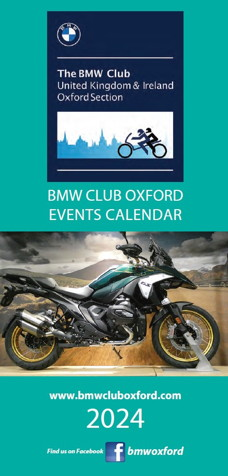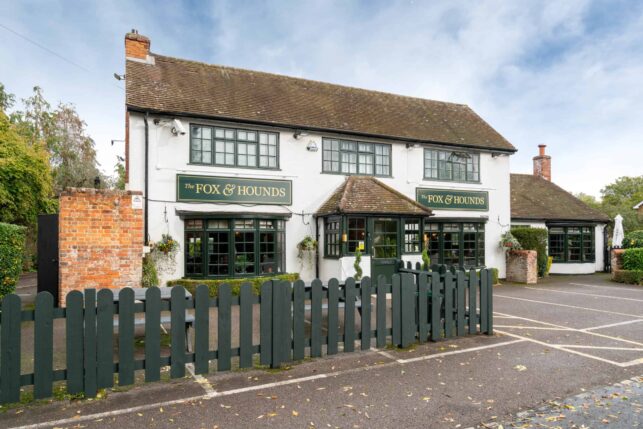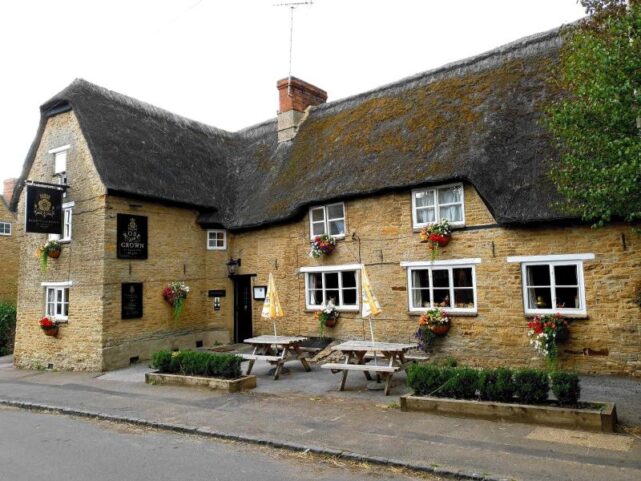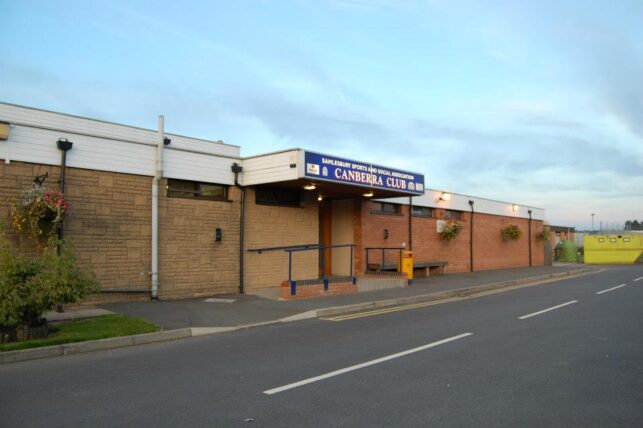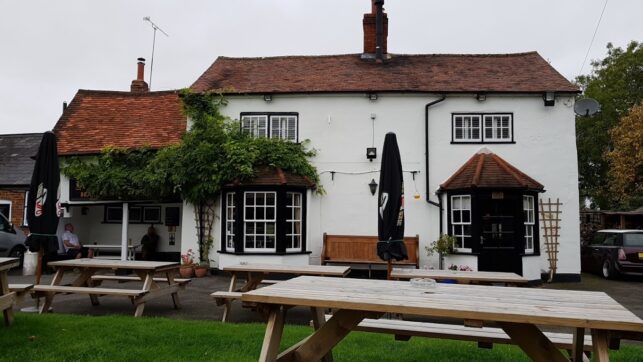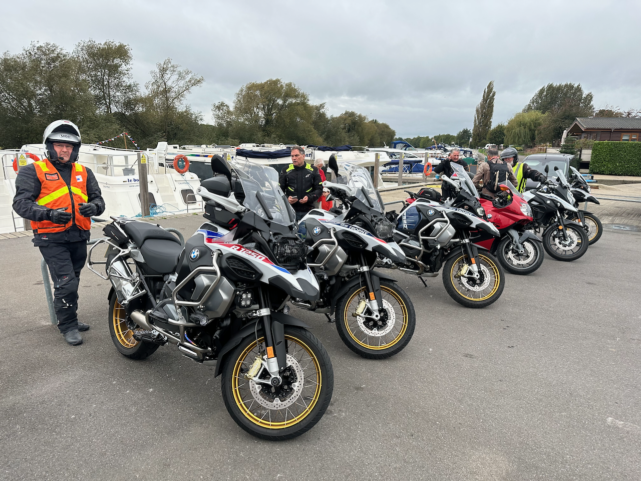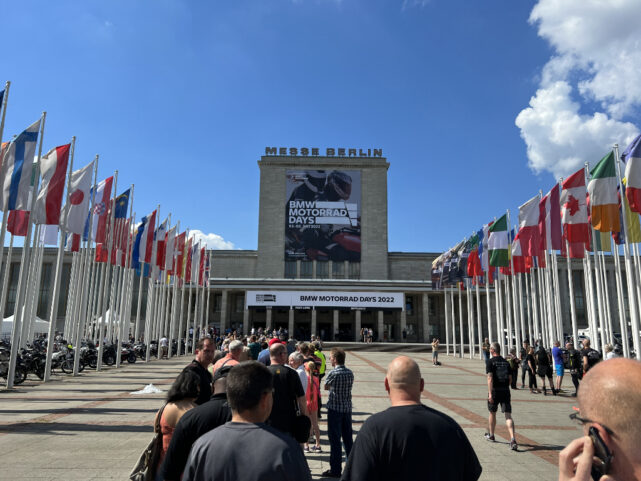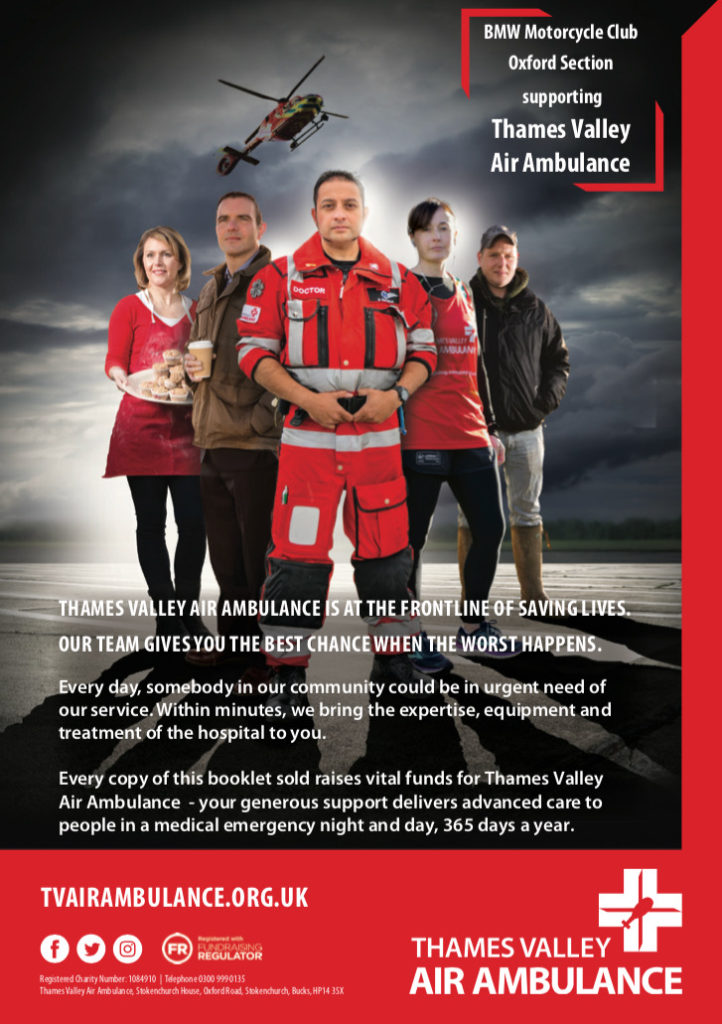By Mark Powell.
If I believed in bad omens, I might never have started.
I booked a ferry ticket on 29 March 1995. On the same day, while loading the bike, the stainless steel side stand snapped in two. It wasn’t standard issue BMW. The R80 G/S is modified for the taller rider, with a longer swing arm and Yamaha front forks and wheel, so there was more stress on the stand. I tried to get it welded the next day in London at a Classic Bike Shop and Bob Porecha, but no luck. Eventually I bought a new BMW version at Bracken. I also fitted a new front tyre At Watling’s. Taking the 5pm boat, I got to a friend’s house in Paris 10.30pm. By lucky chance, a number of Brit biker friends were residents of different European countries, so I had plenty of invites to stay en route. The next night was at a chateau in Burgundy.
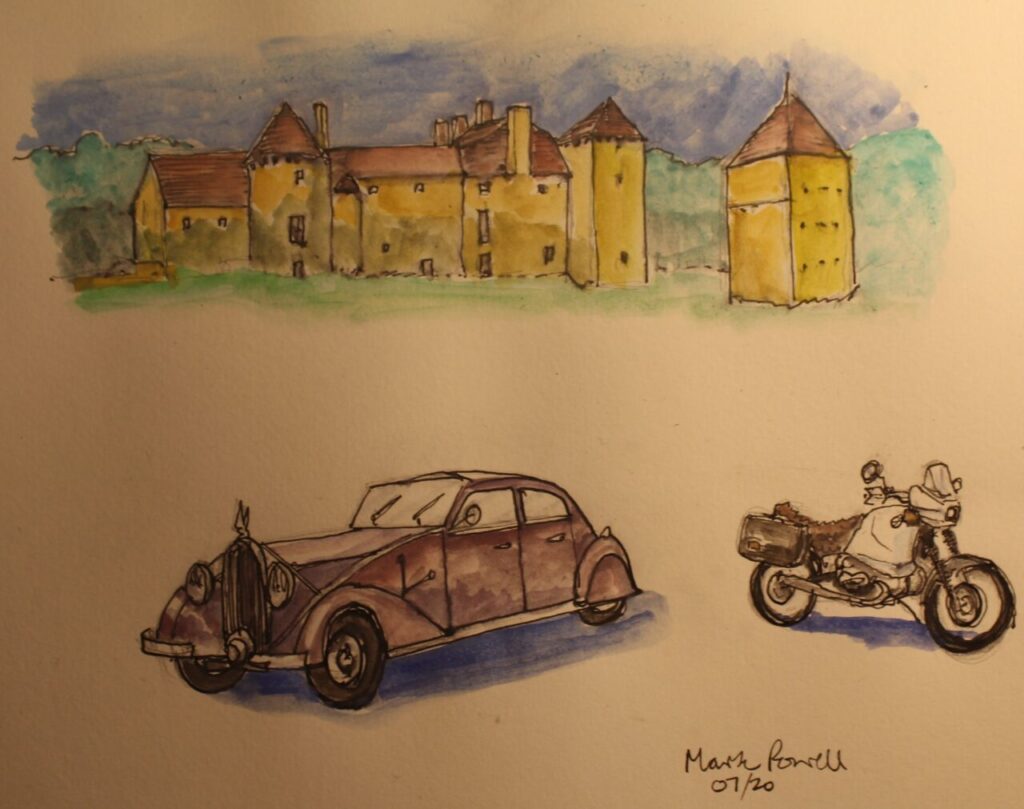
The young Marquis was an old friend I had met while photographing the architecture of the castle in 1989 while riding my R65 through the region. There was a problem with wild boar eating crops, and that night at dinner, an extraordinary hunter dropped in. He was the only one I ever met who hunted on horseback with a huge Bowie knife, chasing the boar until he cornered it, then jumping down to kill it with the blade. I don’t know whether he’s still alive. The next day I helped cut the firewood on the farm. That was probably the most dangerous moment of the trip. This is rural France. We fed logs onto a naked circular saw, while wearing no safety equipment!
A few days later I rode into Germany to stay with a colleague from the Oxford University Motorcycle Club. On Sunday 9th I rode through Swabia on an idyllic curving road through the forest among racing packs of German weekend bikers, and arrived at the home of a retired German with an immaculate R75 and sidecar. Continuing south, I stopped for a museum of Transylvanian German refugees in Geretsried, a former WW II ammunition dump used as a refugee camp and turned into a real town by the practical inmates. The museum had exciting records and models of architecture in Romania. Over the next couple of days the journey continued through a wet Austria, while the R80 powered along, totally stable in crosswinds because of the weight it carried, and eventually reaching Betliar in Slovakia. Here was the home of a tour guiding colleague who was studying English and keen to have me to practice on. She took me to meet the woman director of the nearby palace. I got a tour of the place but was astonished when outdoors to see the local young men try to splash the girls with water. It seems it’s a weird springtime custom of the Slovaks!
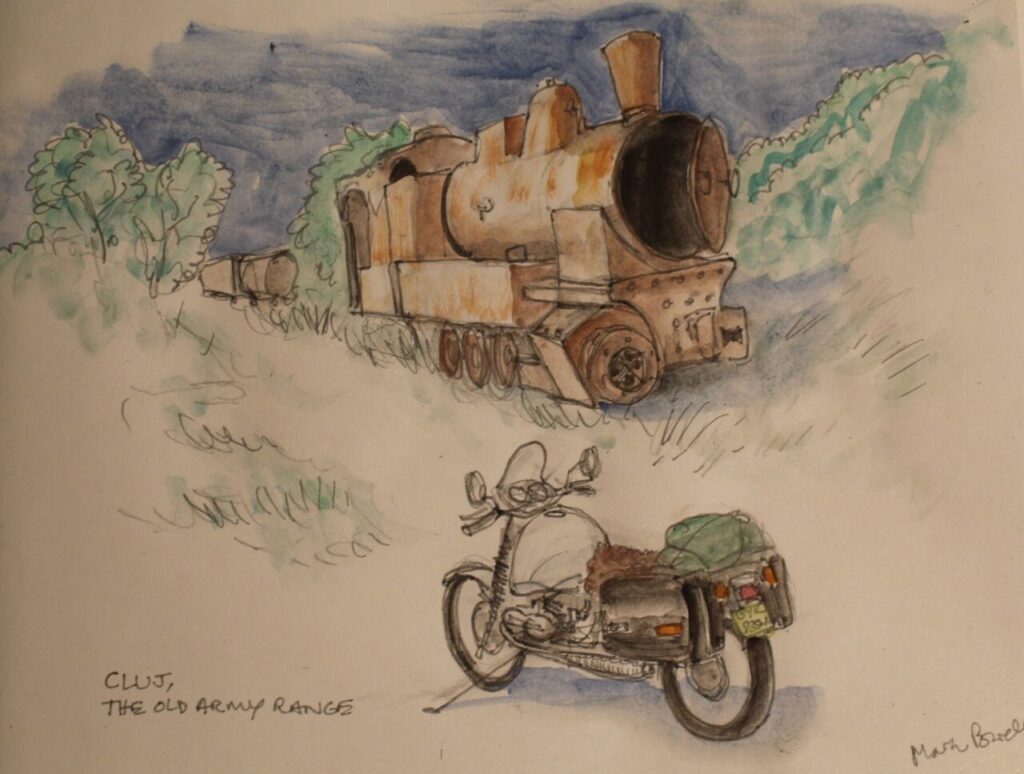
Next was a foray into Poland, to meet up with my fellow Oxford man Matt, who was teaching in Polish school and learning Polish. He had ridden out on his Honda 550/4. He was staying on a former noble estate, now reduced to the old vodka distillery and a cottage. The distillery had been redecorated as country house, with noble furniture and portraits. We spent the next day trekking through the Beskid mountains on the BMW and Honda to find the ruins of wooden villages where locals had been ethnically cleansed by the Communist regime in the late 1940s. There was snow on the ground and the Honda toppled over a few times. We even forded a small river. Returning via Slovakia, I continued through Hungary to meet another Brit on his R100RS at the Romanian border. He was heading for Istanbul and we had planned to ride together through Romania. The Romanian border guard looked at our bikes. He pointed to my G/S and said “That will make it”, and to the R100RS “That will have problems”. The reason was the state of the roads. They hadn’t been repaired in years. We were swinging round potholes continually. In the small village of Copaceni, we tried camping on a meadow, but a local chap who spoke German came up and said if we did, the bears would eat us. Instead he found us a berth in a hovel owned by George, a shepherd and mechanic. We were treated with great hospitality.

A couple of days later we were crossing the Carpathians. We got to the Predeal pass and were obliged to camp in the forest. Not a good choice, as this was bear country. We hung our food on a tree and hoped for the best. The next day we left Transylvania and entered Wallachia under the castle of Bran, now marketed as “Dracula’s castle”, though he had little to do with it. In those days it wasn’t easy to get a decent coffee. We stopped at a roadside bar and ordered some. I couldn’t believe what I saw. The barman put instant coffee grains into cups, and added cold Fanta! Arriving in Bucharest, we dropped in on Peter Bale, a cousin of my biking companion Jon Peter was station head at the Reuters news agency. Being a New Zealander, and an ex-biker, he welcomed us to stay at his flat next to the Egyptian Embassy and fed us. We found the way to protect the bikes on the street. We took a couple of bottles of beer to the Kalashnikov wielding guards outside the Embassy and left them to watch the machines! I was preparing to work as a guide in Romania, and the very next day, I was able to arrange, thanks to Reuters, an interview with the Minister of Culture Razvan Teodorescu in his office opposite the vast “Palace of the People” . I parked on the plaza with no problems from traffic wardens. After a day or so in the city, I noticed that my front brake pads were worn down to the metal. Since there was no chance of finding spares in Bucharest, I went to a street of artisans and bodgers and found a gypsy metal worker sitting in a doorway who scraped the brake material from Dacia pads and rivetted them to my blanks. He charged me six dollars. They lasted all the way home to the UK.
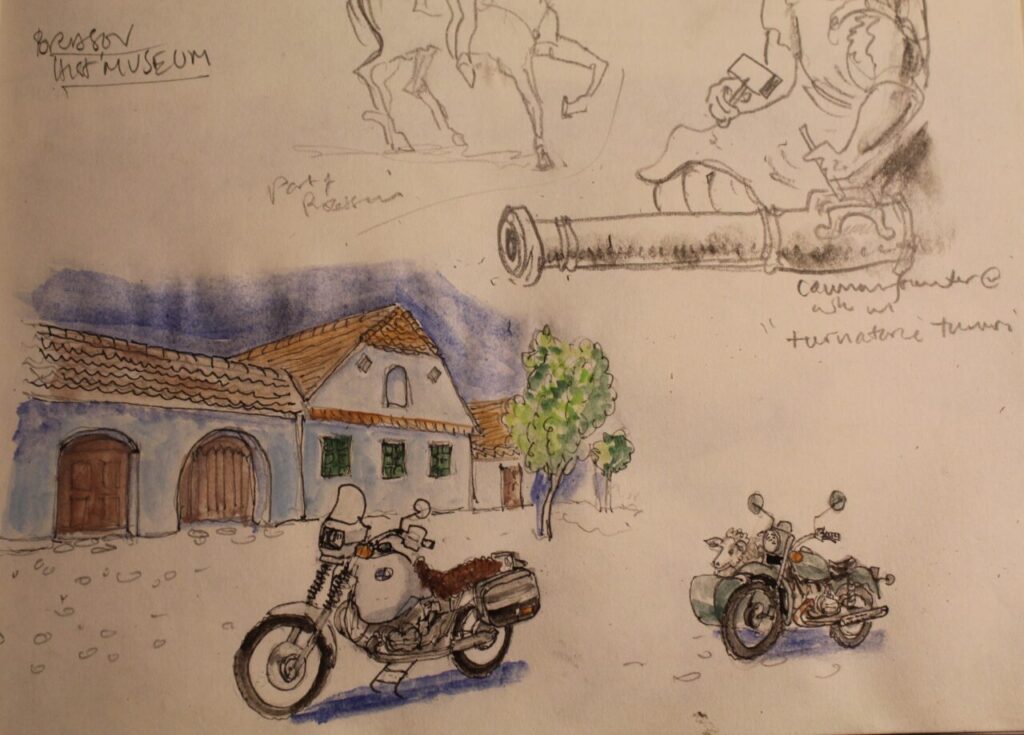
Along with a Reuters team in a jeep I rode out into the countryside to see some monasteries and a natural phenomenon, the mud volcanoes of the Vulcani Noroisi. For part of the trip, I took a young art historian as pillion. She was so excited that she jumped up and down on the seat, with the result that the rear subframe broke! I tried to repair this in a car park, and was encouraged to see helpful local drivers open the boots of their cars and come over with tool kits to lend a hand. Eventually, staying in Buzau with an architect friend, I heard that a Catholic church had a drill and a good electric supply, so I went there, and was working on fixing the break with a metal splint in their yard, when I was disturbed. It was the Papal Legate and a posse of priests. The legate looked confused, then saw my national sticker. “Ah! GB”. He nodded, as if that explained it. The church’s priest wanted a quid pro quo. He asked me to take a letter to parish up country. And so I arrived at a muddy village near Buzau, swerving up the unpaved streets with the rear tyre clogged with goo. The priest, Mihai Cucuteanu, was pleased to see me as a Brit, because his life had been saved by British medics when he crashed his car. We ate dinner served by a tame nun who acted as his housekeeper. He poured me some homemade wine, which was awful, and so we stuck to plum brandy. I slept well.
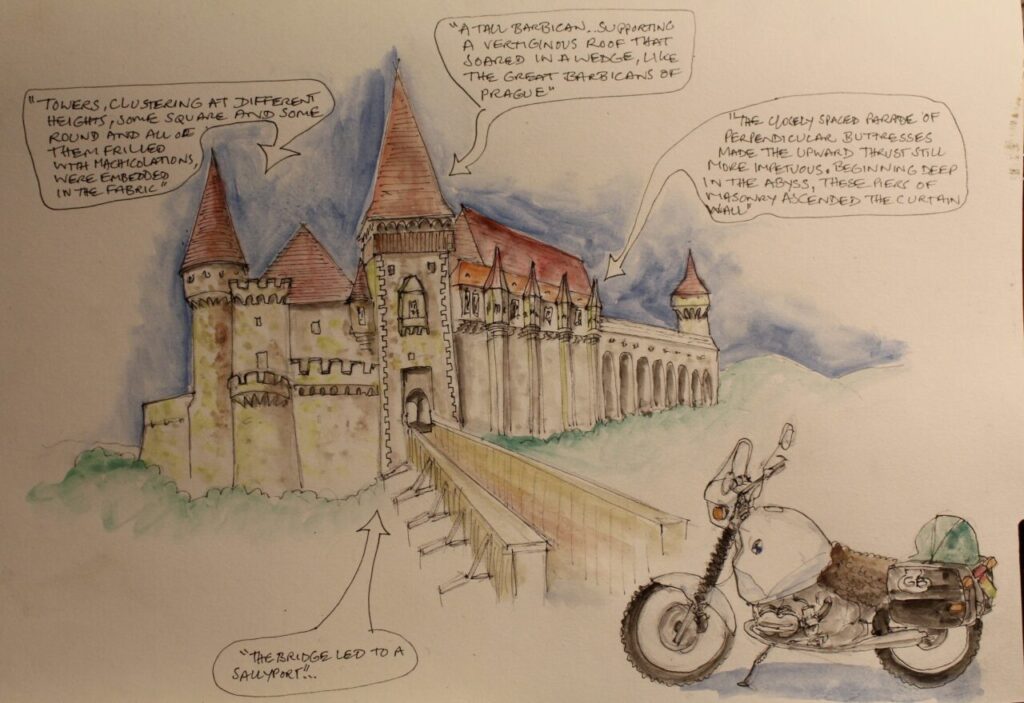
Riding north, I made a tour of the Orthodox monasteries, including the nunnery of Varatec, which seemed to be peopled with naughty young uns like St Trinian’s schoolgirls. Apparently, if a girl was misbehaved, she was sent to a nunnery by her parents. In contrast, I was taken around the great monastery of Neamt by “Brother Seraphim”, who took it very seriously, and led me to a crypt full of the skeletons of previous monks. The next few days were spent in Transylvania, where I had my sub frame welded up by George, the mechanic I had stayed with on the way out. He used home made welding equipment so rickety, that I hid behind a wall while he worked. he also much improved BMW’s design by bending a horseshoe of scrap metal as a brace, which he fitted to the rear rack. He was also the village smith.
Then I set out for home via Hungary , Slovakia, Czechia and Germany, where I visited a German academic who had worked with me at Buckingham University. He was now teaching at Tubingen, where we discussed his experiences driving a VW bus round Romania with mine on the BMW. I finally got to Calais on 14th May, camping the last night on the Continent in a field near Duren, Germany.
On arrival in Dover I had covered 6047 miles in 46 days.
Originally posted 2020-07-21 09:22:47.




